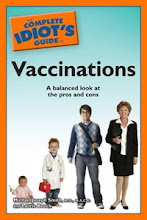Thursday, July 31, 2008
Lessons from a Summer Without Tomatoes
Google's HealthMap provides a visual compilation of a range of diseases reported in the past 30 days from various sources, and in the U.S. salmonella tops the list. The most recent Salmonella saintpaul outbreak, initially blamed on tainted tomatoes, began in April and was finally traced to a pepper farm in Mexico on July 30, according to an article in the Washington Post. Over 1,300 people contracted Salmonella saintpaul this summer, the article stated.
Earlier this month, the center for Science in the Public Interest called for a better labeling process to track where each piece of produce originates, in order to quickly find the source of tainted foods. Growers fought against more stringent produce labeling for years, but they also lost more than $100 million in revenues when tomatoes were mistakenly blamed for the most recent outbreak.
Just to be safe, I've avoided raw tomatoes all summer. I usually use raw tomatoes year-round, and rarely stop to think about whether they are in season, or where they come from. Chile? Guam? Who knows? All I know is that I need tomatoes for a recipe I'm making. But I'm rethinking my blindness to the seasons, and the price (energy consumption, possible difficult-to-trace foodborne illness) of eating food grown so far away. How many trucks, ships, and airplanes has this produce been on, before it is presented (and misrepresented) to me as if I had pulled off a country road to buy fresh fruit at a farmstand? Lately I've started going to my local farmers' markets for produce, where the path from farm to fork is shorter and far less deceptive.
Thursday, July 24, 2008
New Technology Means New Injuries
Although I work online almost every day, I barely touched anything with a silicon chip in it until I was in college, when PCs were just catching on. When I was ten, I borrowed my parents’ old typewriter to write short stories for fun. I remember that the keys would cross and jam if I typed too fast. Sometime I’d land my hands back on the keyboard wrong after I pushed the carriage return, and type a line of gibberish before I realized what I’d done.
As someone who remembers the drudgery of using carbon paper and correction fluid and smudgy typewriter ribbons at her first office job, I’m all in favor of technological advances. But making things easier can create fresh problems, and as manual and electric typewriters faded away, repetitive strain injuries such as carpal tunnel syndrome began to rise. With a typewriter, you have many built-in breaks for your hands, such as pushing the carriage return or feeding in a fresh sheet of paper. Without any electronic boost, manual typewriter keys also require a fair amount of pressure just to work. All this slows down your typing speed, but it doesn’t hurt your hands.
Today’s keyboards and devices encourage a light touch and micro-movements of the hands and wrist, with minimal breaks. This hardware irritates the nerves, tendons, and muscles in the hands and arms, creating new medical problems such as "Blackberry thumb."
Enter Apple Computer, whose forthcoming MacBook laptop is rumored to have an iPhone-like touch screen user interface. It sounds cool, and probably will sell like hotcakes, but it also sounds like a fresh source of injuries. Using a touch screen, presumably touching the screen lightly with just one or two fingers, is hardly the same experience as pecking away at a typewriter.



